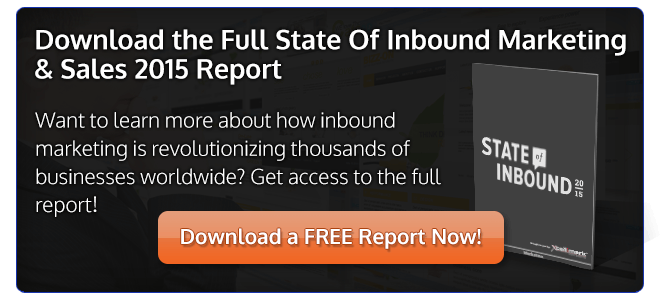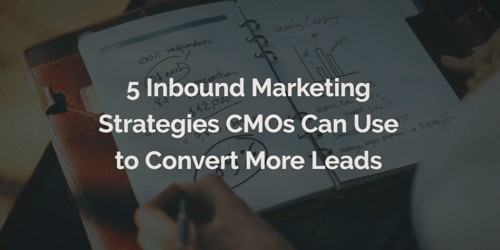5 Powerful Tactics to Help Your Sales Team Close More Leads

 Help your sales team guide more qualified leads to closing and empower them to build a bigger base of repeat customers with these five (5) simple, sales-centric inbound marketing tactics.
Help your sales team guide more qualified leads to closing and empower them to build a bigger base of repeat customers with these five (5) simple, sales-centric inbound marketing tactics.
1. Begin Re-Engaging Dormant Contacts
According to HubSpot, the average email list loses about 25 percent of its active contacts over the course of a typical year. That's an unacceptable loss rate. Fortunately, it's easy to counteract.
Here's how to re-engage dormant contacts and nudge them back into your sales funnel:
- Identify your inactive contacts: Determine each contact's "age" relative to your average buying cycle to figure out which contacts should qualify as inactive. Define and set these criteria.
- Create an inactive contact list: Set up a rolling-date list to ensure that you'll always know which contacts are inactive based on the criteria you set.
- Send re-engagement emails: Emails can take many different forms, including "we miss you" emails, feedback surveys, invitations to opt in to your mailing list, time-limited offers and more.
- Template and automate your emails: Select an appropriate template for each type of re-engagement email. Automate them so that you don't have to manually reach out to dormant contacts.
2. Set up a Lead Scoring System
Lead scoring basically defines the quality of your company's leads. It's a great way to quickly visualize your prospect population and determine the best way to allocate marketing resources across it.
The best lead scores use a wide mix of factors, including demographic information, motivations, interest level, actions taken and more. Each bit of information is assigned a numerical value that indicates its quality. Taken together, these values produce a lead score.
To set your sales team up for success, you need to determine a cutoff score. Above this level, leads are considered "sales-ready." Below this level, they require more nurturing. Pass sales-ready leads along to your sales team and assign non-ready leads to the lead nurturing workflow described below.
3. Create a Lead Nurturing Workflow
Creating a lead nurturing workflow is a multi-step process. Here are the basic sequence of events that get you from point A to point B:
- Plan out your workflow's steps: Figure out who you're trying to nurture and what the end goal of this nurturing activity is. In many cases, you'll simply aim to get as many prospects sales-ready as possible.
- Visually map out your workflow: Draw a diagram or visual representation of how your workflow will look. In other words, lay out the sequence of events and "touches" that you'll apply to each prospect.
- Build your workflow's list: Populate your workflow's contact list with non-sales-ready leads.
- Create and build a goal list: Create a dynamic list that captures all of the workflow leads who take the action you nurture them towards. This helps you measure your success rate.
- Create and automate nurturing emails: Use automated lead nurturing emails to cost-effectively reach and nurture leads. Remember to test your workflow prior to operationalizing it. Once it's cranking, analyze it on a regular basis.
4. Designate Your Prospects' Lifecycle Stages
Sales-centric inbound marketing relies on a keen understanding of the sales lifecycle. Accordingly, you need to segment all of your prospects, leads and customers into different lifecycle stages. Knowing where each of your prospects stand at any given time provides valuable visibility into your lead nurturing operation and ensures that you don't let any leads fall through the cracks.
Inbound marketers generally assign prospects to one of eight lifecycle stages:
- Subscribers
- Leads
- Marketing qualified leads
- Sales qualified leads
- Opportunities
- Customers
- Evangelists
- "Other," including dormant contacts, closed accounts and the like
5. Upsell and Cross-Sell Throughout the Lifecycle
Inbound marketing's "secret sauce" is a robust program of upselling and cross-selling that takes place during the latter stages of the sales cycle.
To launch your upselling and cross-selling operation, you need to identify your existing customers and sales-qualified leads. Determine the products or services for which they'd be most receptive to upselling and cross-selling overtures. Create and automate an email- and phone-centric operation that nudges them to squeeze more value from their relationship with your organization and add more value to your bottom line.
Learn How to Use Inbound Marketing for Sales
These inbound marketing tactics are effective tools in virtually any company's marketing arsenal. If you rely heavily on an internal sales force to close deals with prospects, you're sure to find them valuable and potentially lucrative.
However, there are plenty of other inbound marketing tips you can learn about by downloading the free report “The State of Inbound Marketing 2015.” You just have to figure out which ones make the most sense in your specific situation and devote your limited marketing resources appropriately.
If you need assistance, we're happy to help. Give us a call or contact us online at your convenience!








